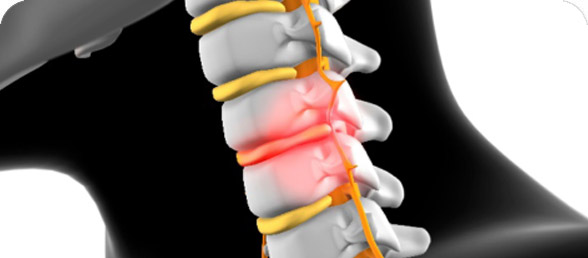Our knee and hip joints are a common focus for osteoarthritis. However, there are other evolutionary strategies in nature that are better than ours!

Knees of course are one of the most commonly affected areas for osteoarthritis (OA). Could there be other solutions that already exist in nature that are superior to our own?
While we were on half-term, I watched a programme on TV by Dr Alice Roberts who is an Evolutionary Biologist. She undertook the fascinating project of replacing all the most important parts of the human body that could be better designed with superior alternative design concepts already found in nature. The first thing she scrutinised was the knee joint.
How Common is Osteoarthritis in the Knee Joint?
By the age of 50 years old roughly 15% of us have some degree of knee pain and osteoarthritis, increasing to 25% by the time we are 60 years old. In the UK there are about 70,000 knee replacements each year, according to NHS statistics, and this currently is rising by 8% per annum (average age of 70-year-old). If we include hip replacements this figure rises to approximately 160,000 procedures.
The real problem is that in evolutionary terms, over the last hundred years, we are living longer, and we would all like to remain as active as possible but conditions such as osteoarthritis impedes our desires. Fundamentally, evolution selects traits that influence survival so that we can pass on our genes. Evolution does not preferentially select for longevity, so what would an ideal pair of legs look like that would be less likely to suffer from osteoarthritis?
A good starting point is to see if there any other evolutionary strategies in nature that solve the riddle of being bipedal in a better way.

As we all know, osteoarthritis in the knee is caused mainly by a slow progressive loss of cartilage in the joint. Cartilage is virtually friction free, it is almost as slippery as two ice cubes articulating against one another. The main issue is that cartilage, once damaged or worn, does not replace itself. This is also covered on our website section on common presenting conditions.
By the age of 85, even an average sedentary individual will easily have clocked 160,000 km and an active person maybe over 320,000 km, or almost 8 times around the world. No wonder it is a focal point for osteoarthritis.
Interestingly, in terms of evolution, nature has provided two answers to moving on two legs.
Are there other Evolutionary Strategies?
Most of us tend to forget that the only other animals that are truly bipedal are birds. Evolution has been hard at work developing biomechanical strategies for them for 250 million years, whereas we (as comparative newcomers) only came down from the trees only 5 million years ago.
Our strategy for walking is part compromise as our feet were initially designed for gripping tree branches, with later evolutionary amendments that enabled us to stand upright. Compared to birds our ankles are also complex unstable structures that are subject to sideways movements and inversion injuries because they rely on ligaments to bind bones together.
There are clear big differences between the two evolutionary strategies. Birds are what we call digitigrade (they walk on their toes) and we are plantigrade (we walk with our entire foot on the ground).
An Ostrich is the Same Weight as us and Bipedal but it can run at 70 km/h!
This is interesting. If we look at an ostrich (Struthio camelus), which is roughly the same weight as a human adult, it can run at top speeds approaching 70 km/h or at an average speed of roughly 60 km/h (it could complete a full marathon in 40 mins). Obviously, this implies it can easily outpace any hungry predators! Exactly how an ostrich achieves this, in terms of lower limb biomechanics, has begun to fascinate scientists and engineers. We may, for instance, be able to adapt the same strategy in modern technologies such as bipedal robotics, suspension systems, and joint-stabilisation engineering. This would all help filter down to improve our knowledge of knee joint function and help prevent osteoarthritis.
The critical difference in an ostrich is that the leg achieves a significant amount of leverage. Its leg is comprised mainly of bone and long tendons which store a great deal of energy. This considerably reduces the effort to move forward and puts much less stress on joints in the lower limb. The main muscles that drive these long levers are located high up proximal to the body, enabling the ostrich to take huge frequent strides with much more freedom of movement. A study in the Journal of the Royal Society Interface (Rankin et al 2016) compared five humans with five tame ostriches and undertook detailed analysis of their gait and movements over a custom-built running track 50 meters long.
Dr Rubenson, who was one the lead researchers from the University of Western Australia (UWA), said “The UWA lab adopts experimental and modelling approaches in both humans and animal systems, and applies this knowledge to improving human health and performance. My current projects involve measuring human muscle strain, force and energy use during movement in both normal and gait impaired individuals. Future work aims at applying this information in technologies for enhancing human gait, such as improving locomotor economy and reducing muscle injuries.” This could have real benefits for the alleviation of osteoarthritis.
Interestingly this project measured the forces applied to the ground during running. Results demonstrated that humans and ostriches require almost the same amount of mechanical work to swing their limbs during running. The major difference was in the storage and release of energy by tendons. They calculated the release of this elastic energy generated 83% more work in the ostrich than in the human, which meant the ostrich uses less metabolic energy and fatigues much less easily! In fact, the ostrich possesses a remarkable economy of locomotion for its size, its energy cost of running (J kg−1 m−1) is among the lowest recorded.
Ostrich tendons are very long, nearly 80 cm or 31 inches. These are essentially like a long rubber band, so clearly these long tendons have the capacity to store much more energy. Ostrich tendons provide another advantage. They are arranged in a way that forces the leg to have a restricted rage of movement (unlike us they don’t have to sit down!) and are therefore less likely to suffer from degenerative conditions such as osteoarthritis. Human legs allow a wider range of joint motion that evolved to allow us to climb trees but, when running, we must spend energy suppressing sideways joint movement.
If you interested to see what the outcome of Professor Alice Roberts work was, you can enter Professor Alice Roberts Ostrich legs into Google and see a picture of the human body with modified body parts, including a fine pair of ostrich legs! Now we all have something else to worry about, particularly those people who run, which is ostrich envy!!






